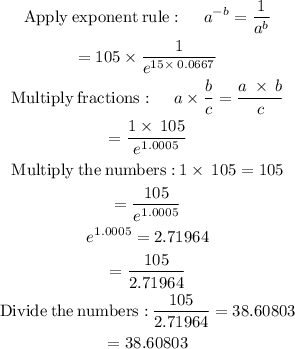SOLUTION
Given the question in the image, the following are the solution steps to answer the question.
STEP 1: Write the given parameters

STEP 2: Calculate the rate of decay (k)

STEP 3: Calculate the number of squirrels after 15 years

By substitution,

By simplification,

By approximation, this leaves us with 34 squirrels